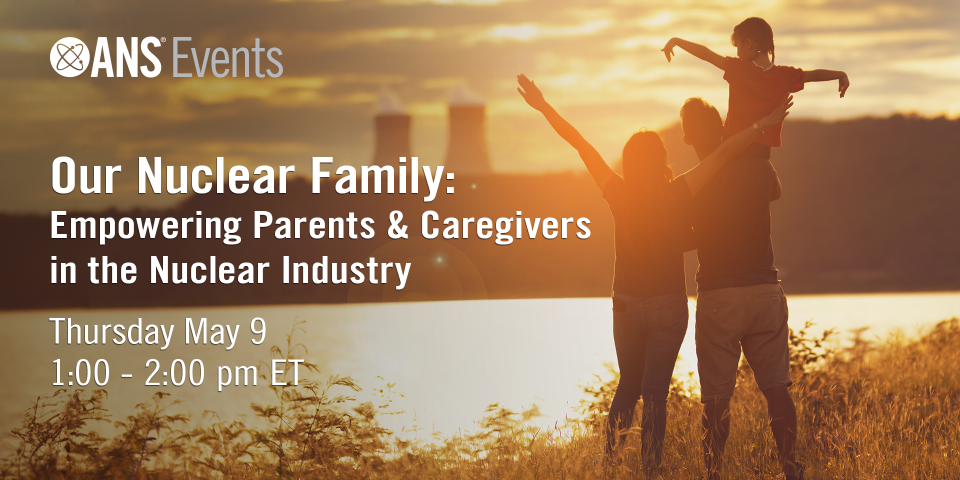Cultivating leadership behaviors in a post-pandemic energy sector
The nuclear community has been one of the safest and lowest-risk industries in the world, allowing it to compete in a crowded energy sector without compromise. This defining ethos is predicated on strong, emotionally safe cultures that have enabled the nuclear power sector to honestly and transparently learn from notable mistakes, such as the design flaws that led to the 2011 Fukushima Daiichi accident, resulting in a safer, more competitive industry.
No industry, however, can rest on its reputation. The COVID-19 pandemic exposed new vulnerabilities, requiring companies throughout every industry to prioritize emotional safety alongside physical safety. As nuclear evolves to meet the next challenge, it serves as a model for diverse companies to mindfully consider the high standard this industry has established regarding safety culture—a newly essential ingredient in our post-pandemic work world.
When powered by facilitative leadership—a toolset used at several nuclear power stations— companies can develop observable and repeatable leadership behaviors that bring out the best in employees while improving overall performance. Facilitative leadership is about aligning people in the same direction so that they can achieve a shared goal. What makes it different from the other forms of leadership is the involvement of others at the decision-making stage.
Expanding the definition of safety culture
As employees begin returning to on-site facilities, safety is a top concern. Nearly three-quarters of employees worry that returning to work will harm their health and physical well-being. As a result, many businesses are going to great lengths to ensure worker safety and comfort. For instance, Google is reorienting its entire approach to physical spaces, implementing everything from privacy robots to balloon walls to help people feel safe and remain productive.
Despite the pandemic, the nuclear industry is continuing to perform at an exemplary level, maintaining high safety standards, advancing new research, and exploring new energy initiatives. For example, in the United States, the nuclear industry has safely produced 20 percent of the energy consumed in the country, without contributing greenhouse gases to the atmosphere, and for the 22nd year in a row had an availability in 2020 of over 90 percent, effectively setting the standard for reliability. Even with social distancing and pandemic-inspired protective equipment in place, the completion of two large, advanced reactors in Georgia is at our doorstep, involving a team of more than 7,000 workers. For each of these accomplishments, the industry has relied on a teamwork-centered approach that encourages dialogue and collaboration between leaders, regulators, and everyday employees. It is that teamwork-based approach and an insistence on a strong safety culture that is the foundation of this industry's success.
Critically, in a post-pandemic landscape, our understanding of safety needs to be sure to include emotional safety. It’s something that the nuclear sector has believed in from the beginning, and it’s something that all sectors should reemphasize moving forward. The recent pandemic has taken a significant toll on workers, leading to unprecedented levels of exhaustion, fatigue, and burnout. According to the Census Bureau, one-third of Americans show signs of clinical anxiety or depression, underscoring the need for companies to account for employees’ emotional well-being as a path to promoting physical safety.
To promote emotional safety that creates holistically secure workplaces, industries should invest at the top, developing facilitative leaders that can promulgate safety culture throughout an organization.
Facilitative leaders in the nuclear sector and beyond
Investing in facilitative leaders ensures that companies are ready to meet the moment, and their effectiveness is critical in the energy sector and beyond. As Maria Korsnick, president and chief executive officer of the Nuclear Energy Institute, said at a State of the Nuclear Energy Industry event in March, “There is no bigger opportunity in front of us than rebuilding the world’s energy system around carbon-free sources. From good-paying jobs and carbon-free electricity to U.S. global leadership, nuclear energy is the source that can make it work.”
Facilitative leaders are one clear expression of this principle, helping develop workplace cultures that promote emotional and physical safety. Here’s how to begin that process:
1. Establish collaborative best practices. As companies emerge from the pandemic, employees are returning to an unfamiliar environment where collaboration norms and best practices have been upended. Specifically, many organizations have deployed hybrid teams, requiring companies to account for both on-site and remote workers when developing collaboration strategies. In this environment, determine organization-specific best practices for collaborative norms moving forward.
2. Look back and forge ahead. Understand gaps to excellence exposed by the pandemic and put actions in place to perform better with the next challenge. What’s more, organizations need to set aside time to pause and process the past year, both for themselves and for their teams. Whether self-assessing the implications of the pandemic or asking teams to engage in this process, inquiry questions can facilitate the process, including:
- What have we learned over the past year?
- What was the biggest surprise over the past year? Why?
- What have my team members told me about their experiences, and how does that inform me, as a leader, for what actions I need to take?
- What can I learn from my team members to better understand the experience they have had over the past year?
Facilitative leaders pursue inquiry within themselves and among their teams. It’s the best way to move forward effectively after a traumatic and challenging year.
3. Cultivate an emotionally safe culture. Emotionally safe workplace cultures don’t happen by accident. They are intentionally created and continually cultivated as leaders demonstrate that employees are empowered safety advocates, collaborators, and participants in the organizational process.
4. Concentrate on effective meeting management. Meetings are a microcosm of organizational culture. Don’t miss an opportunity to make meetings matter by deploying specific plans, clear agendas, and actionable outcomes that empower and inspire all employees to succeed. Companies can’t afford to let ineffective meetings diminish a built-in opportunity to establish these critical priorities to enact a safety culture at scale.
5. Conduct careful listening sessions. A strong lessons learned program relies on employee feedback. Listening sessions can allow leaders to glean critical insights into their holistic organizational well-being. Take time to process feedback and develop informed action plans predicated on this information, moving to prepare for the next strategic opportunity.
Conclusion
The nuclear sector thrived in the midst of the pandemic, relying on its established culture of safety to flourish in a challenging environment. As the industry continues to progress, investing in leaders and developing holistically healthy teams, it can serve as a model for other industries, demonstrating how to keep teams healthy, productive, and efficient in any environment.
As businesses begin to reopen, there is an opportunity to rejuvenate employees and regain lost ground from a pandemic year. Whatever goals companies hope to achieve, they will be built upon the foundation of safety first.
Edward Halpin is owner and chief executive officer of leadership consulting company HLI Inc. He previously worked in leadership positions at Pacific Gas & Electric and the South Texas Project Nuclear Operating Company.
Michael J. Reidy is a senior consultant at leadership and collaboration firm Interaction Associates and has supported clients including Baltimore Gas & Electric (Calvert Cliffs Nuclear) and Curtiss-Wright Flow Control.




